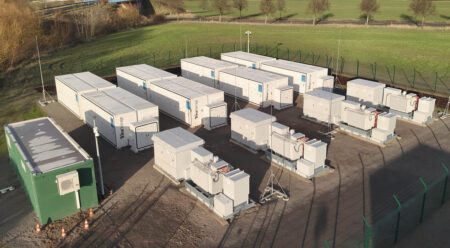
Millions of tons of batteries are waiting for a “second life”! (Bus Blickpunkt – Magazine)
*Original in German, published in the magazine “Bus Blickpunkt”, issue July 2023; translated by volytica
Interview with Thorsten Wagner, Editor-in-Chief, Bus Blickpunkt at Elekbu in Berlin
Batteries are the most important and the most expensive component of an electric bus. A lot of high technology is built into them, and they are packed with electronics. But how are the batteries performing? What role does the charging stroke play and what should a bus operator consider in its tender?
Batteries are the most important and the most expensive component of an electric bus. A lot of high technology is built into them, and they are packed with electronics. But how do batteries fare after years of use, and what does that say in terms of lifespan and resale value or warranty coverage? Using terabytes of data coming from the battery management system, volytica diagnostics has been analyzing the health of batteries for years. And more and more often, it is also about their fire safety.
How did you come to specialize in battery analysis on the server side, since you come more from application-oriented research?
About twelve years ago, we had the unique situation that we were already monitoring several electric buses – for example, from the former Göppel Bus GmbH – due to various research projects. But no one knew how the batteries were really doing. So, we collected a lot of field data and were then able to combine it – probably as the first researchers in Europe ever – with our battery analysis processes. Over the years, we developed our own server-side solution from this. Due to the high demand from several industry partners, Sebastian Stoll, our CTO, and I then founded volytica in 2019.
Is the data from inside the battery enough for you to do a comprehensive health analysis?
That’s a tightrope walk. The more detailed the analysis, the more data is needed. Before thinking about collecting additional data, the existing data should be used – and yes, these are usually sufficient! In the meantime, there are standardization efforts to unify the data situation, such as the new VDV 238 standard. Personally, I am sceptical whether additional sensors, such as gas sensors, would really be of any use in fire detection. When defects are so advanced that they become immediately detectable, it is usually already too late. This also applies to temperature anomalies.
So what exactly is your analysis system called “vdx engine” capable of?
We use all data defined within the VDV-238 standard, such as battery voltage and current, temperatures and state of charge (SoC).This data is systematically collected by fleet management or telematics systems from the majority of vehicle owners. Our solution – which we have christened “vdx engine”, i.e. the “volytica diagnostics engine” – accesses these data treasures via interfaces and “translates” the raw, unhewn data into a series of relevant parameters. Kind of like a blood count: blood in, values out. Except we additionally provide criticality assessments and resolution instructions, such as whether there is a potential anomaly that could pose an availability or even a safety issue. The results are displayed on a separate dashboard or transferred directly back into the fleet management system – such as the solution from INIT and CarMedialab.
What does a specific case look like in which your system has detected an error?
We are analyzing the sub-fleet of a large German transport company. This company uses an established fleet management system and collects the necessary and continuously collects the necessary battery signals. The vdx engine is directly connected via interface and continuously analyzes this data. A few months ago, we detected an anomaly indicating a problem with individual cells. This is, mind you, potentially safety critical. Leaking cells, or cells with this development, can pose danger to life and limb! Through our anomaly detection, the vehicle could be taken out of service and the battery system examined with the help of the manufacturer. Spot landing! Exactly the cells identified by volytica were on the way of their imminent end.
Do you also offer typical service life analyses for batteries?
Yes, we did that first. The topic of safety was added relatively late. The focus here is on the dispute-free determination of the degree of battery wear. It is important to mention we are neither the advocate of the vehicle owner nor of the manufacturer. We offer a sober and neutral analysis of the situation. In the case of the largest resale of used e-buses in the Netherlands in 2022, we were precisely this neutral body with TÜV Nord, which made a fact-based residual value negotiation of the most expensive wearing part of the mobility turnaround possible in the first place.
What role does the charging stroke of the batteries really play, which the customer can influence himself?
The role of the hub has an enormous influence! We usually talk about the so-called “SoC window”, often we also talk about the “Depth of Discharge” (DoD). So, when operating between 90 percent battery charge in the morning and 30 percent in the evening, the hub is 60 percent in a 90 > 30 percent window. Many Li-ion battery chemistries are significantly sensitive to the window “swept” during operation. For example, the life of many – but not all – NMC-based (nickel-manganese-cobalt) batteries can be nearly doubled by simply operating between 70-10 percent instead of 90-30 percent – i.e., up to 15 years instead of the calculated eight years, with the same driving throughput! In general, lower shutdown charge levels are gentler on most battery types. Unfortunately, the battery also ages significantly when it “sits around”. Many billions of euros and many millions of tons of batteries are waiting for their chance for a second or even third life, instead of going into recycling unused or lying in storage.
Are you technology-neutral when it comes to battery chemistry?
We are 100 percent technology open. However, it is also a fact that a technology with a flat OCV curve (“Open Circuit Voltage”) in LFP (lithium iron phosphate) and LTO (lithium titanate oxide) batteries are more difficult to diagnose – but that goes into too much detail. goes into too much detail. LFP, with its many advantages, presents many operational problems because of this.
So what should a bus operator look for in its electric buses from your point of view?
In the invitation to tender, it should be ensured that the manufacturer discloses all the necessary diagnostic data for him, according to the minimum signal list of the VDV 238 standard. Depending on the chemistry are further tips, such as not charging the battery too fully or generally creating a concept for charging management.
Source: July issue 2023 Bus Blickpunkt



